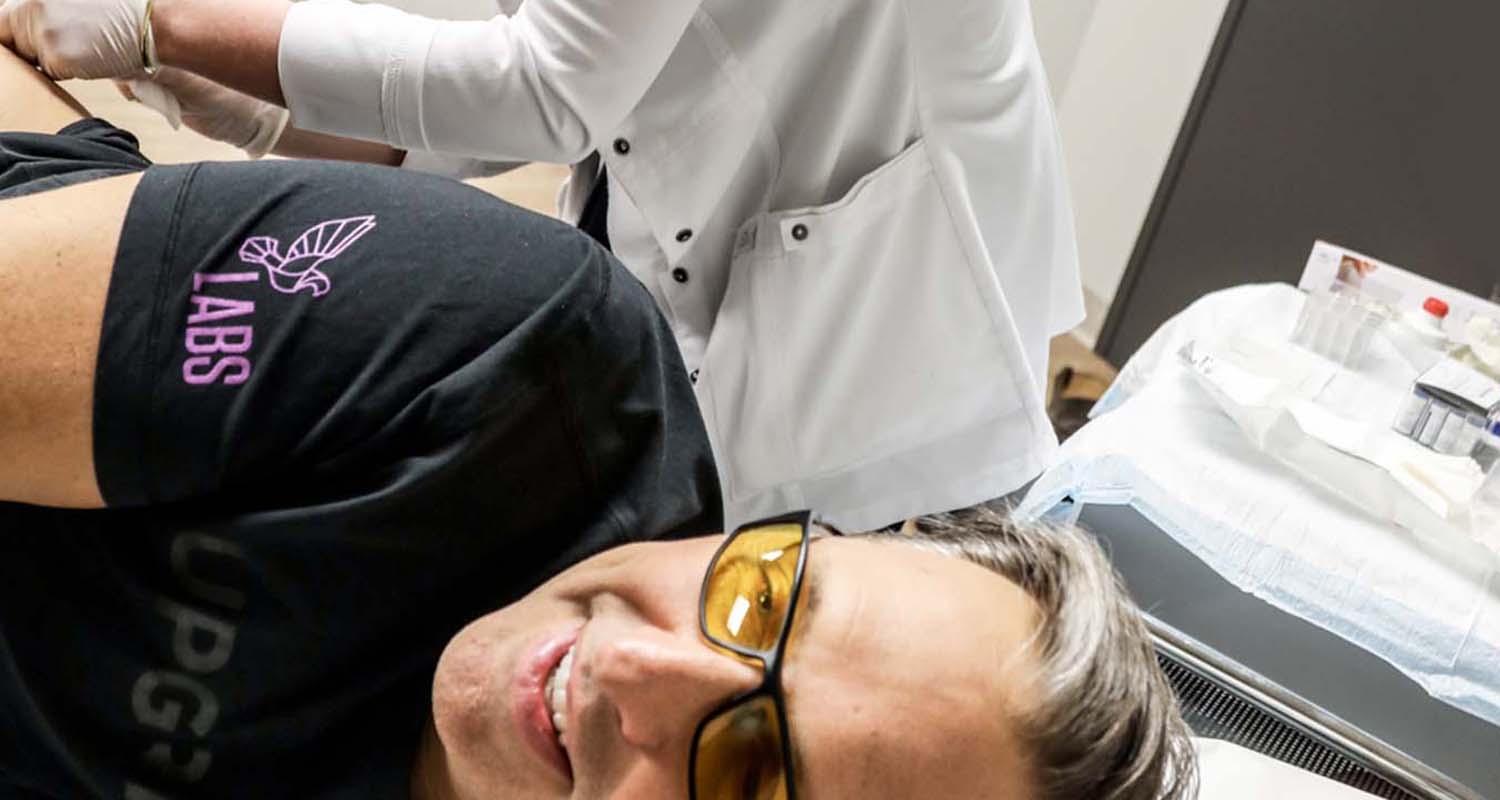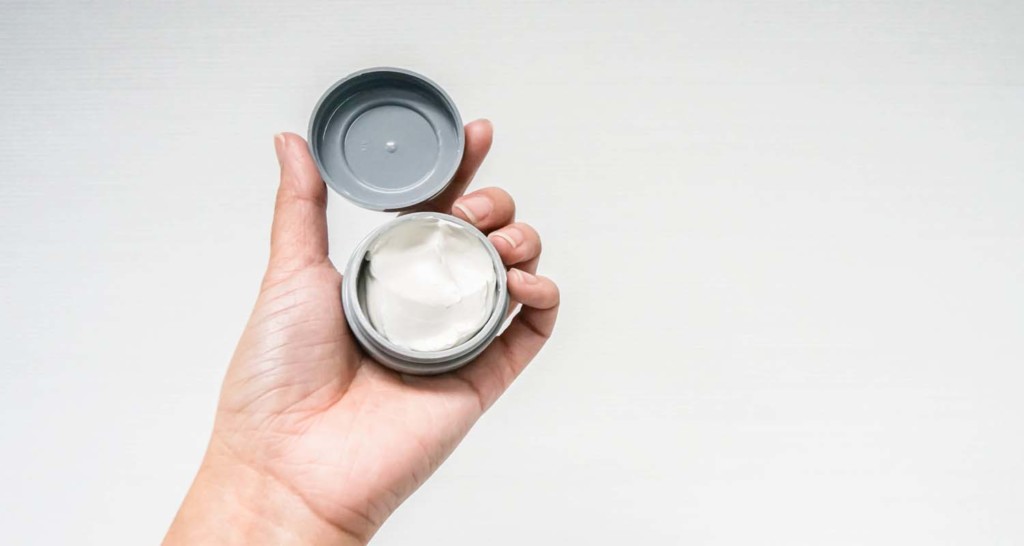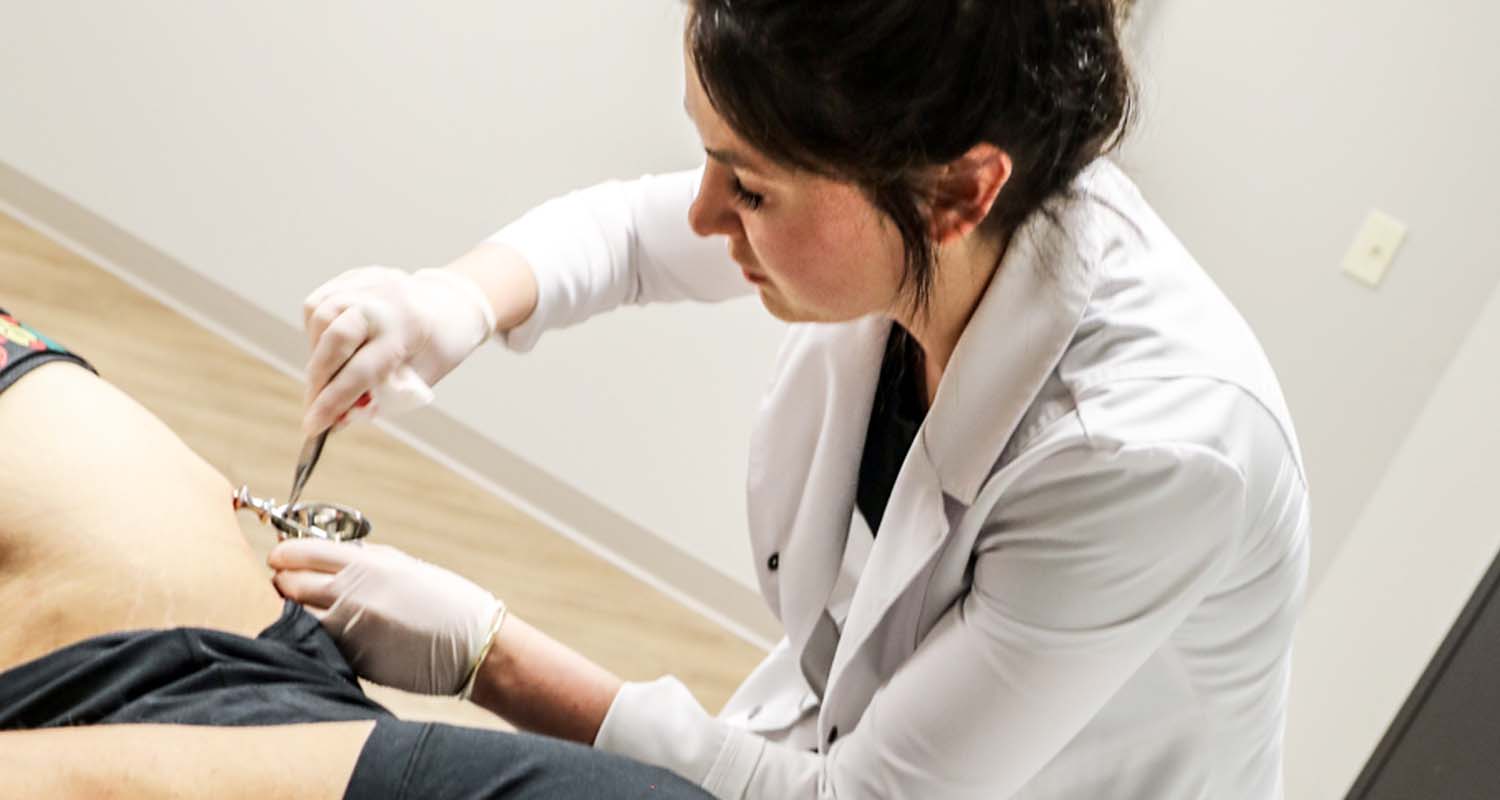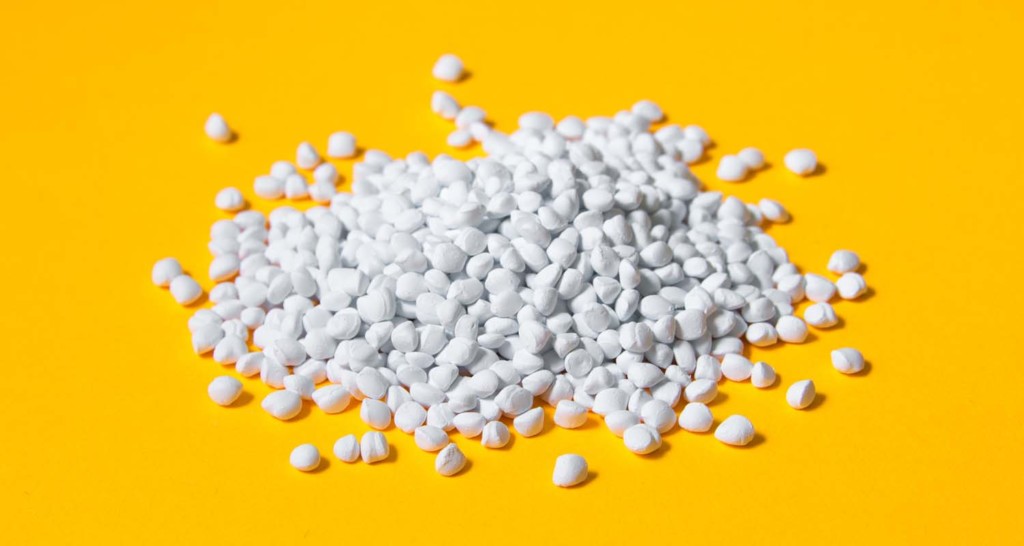
- You might think testosterone is for muscles and the bedroom. The reality is, almost everyone can benefit from testosterone replacement at some point in their lives.
- By your mid-forties, there’s a good chance your testosterone levels dropped low enough that some of your body functions aren’t working properly, and you need some.
- Learn the difference between testosterone cream, gel, testosterone injections and pellets, and what labs you’ll need to monitor to keep your estrogen in check.
- Read on to find out how to get your groove back, not just in the gym and the bedroom, but in life.
You might think testosterone replacement is for meatheads who want to lift all day and eat all day, with the endgame of looking like a balloon animal. The reality is, almost everyone can benefit from testosterone replacement at some point in their lives. By your mid-forties, there’s a good chance your levels dropped low enough that some of your body functions aren’t working properly, and you need some.
Testosterone isn’t just for muscles and the bedroom. Low testosterone levels affect your memory, bone density, heart health and more. Testosterone is a big factor in your mood, too. My older friends on the board of the anti-aging nonprofit I run call the effects of low testosterone “cranky old man syndrome.” The movie “Grumpy Old Men” parodies what happens when you get older and your testosterone tanks.
Looking at you, too, ladies. Testosterone plays a role in your heart, your bones, your memory, and your energy, and bringing your levels to normal won’t make you grow a beard.
Testosterone supplementation has a reputation for giving women manly features and giving men acne, anger, and sex problems. That’s because people misuse it. Medically supervised testosterone replacement is completely different from juicing on steroids. More on that in a bit.
When you do it right, testosterone replacement helps you burn fat, build muscle, and helps maintain normal sexual function. Testosterone in normal ranges makes you a happier, calmer person, too. According to a study of 83,000 older men who underwent testosterone replacement therapy, normal testosterone ranges reduce your risk of death from all causes.
Keep reading to find out when you need testosterone replacement and how to do it correctly.
What are the signs of low testosterone?
When I was 26, I was off-kilter, head to toe. I couldn’t think, I couldn’t move without pain, and I had body fat that wouldn’t budge despite doing everything by the book. When I was ready to figure out why my body didn’t work, I went to anti-aging doctor for a complete workup.
After some testing, I found that that my testosterone levels were lower than my post-menopausal mom’s, and that’s why I couldn’t lose weight and felt so tired and achy all the time. My free testosterone (the kind that your body can use) was low, and what I did have was bound to sex hormone binding globulin (SHBG), which means your cells can’t use it and it’s on its way out of the body.
On top of that, I have the gene that predisposes me to converting everything to estrogen, so the free testosterone I did have was converting to estrogen quickly. I had a lot of extra weight and man boobs, and since fat cells make estrogen, my estrogen levels compounded over time.
A lot of people with low testosterone might know they feel like garbage, but wouldn’t even think the symptoms call for a trip to the doctor. If you’re tired, you think you need to go to bed earlier. If you’re achy, you suspect it’s part of getting older. If you do end up making an appointment, the doctor may or may not think to test your testosterone levels if you have just a few low-level signs of low testosterone.
You may not have any noticeable symptoms, you may have one or two, or you could check off the whole list. Here are some of the symptoms of low testosterone.
Signs of low testosterone in men
- Weight gain
- Gynecomastia (man boobs)
- Erectile dysfunction
- Decreased sex drive
- Changes in sperm count or infertility
- Fatigue
- Difficulty concentrating, brain fog
- Memory problems
- Reduced strength and muscle mass
- Depression, anxiety
- Aches and pains
- Bone density changes
- Changes in cardiovascular disease risk markers
- Listlessness, decreased motivation
- Anger, agitation, irritability
Signs of low testosterone in women
- Weight gain
- Fatigue
- Reduced strength, endurance, muscle tone
- Dry skin
- Thinning skin
- Painful intercourse
- Decreased or absent sex drive
- Loss of muscle tone in arms and legs
- Difficulty concentrating, brain fog
- Memory problems
- Depression, anxiety
- Listlessness, decreased motivation
- Bone density changes
Those are common signs for a lot of conditions. See why it’s so easy to miss? This is one of those times to ask for the lab tests you want.
Does testosterone replacement therapy work?
If you get some baseline bloodwork taken, then start the correct amount of testosterone, then test again, you’ll find that your numbers respond within a matter of days. You feel it, too. Right off the bat, I noticed my mental clarity came back, I had more energy than I’d had in years, and I wasn’t senselessly angry anymore. Even though I never had problems in the bedroom, bringing my testosterone up … ahem … put some extra air in my tires.
Then, there are the benefits you don’t feel right away. You don’t necessarily notice your bones getting stronger or your heart attack risk going down, but it’s happening. Not long after I started testosterone replacement, we started talking about having kids, and testosterone helps the swimmers get their swim on.
Women notice an enormous difference with only a small percentage of the dose men take. Most commonly, women report that it brought their zest back, not just in the bedroom, but in life. The things you can’t measure are the ones that are most impactful, like positive changes in mood, motivation, concentration, and more. Especially when crossing into peri-menopause and menopause and hormonal shifts affect so much of everyday life, testosterone helps women feel like themselves again.
Here’s how to get started.
Get your testosterone testing, along with other measures
Before you start, you’ll want to consult with a doctor and get some lab work done. You might have to shop around for doctors before you find one who can effectively advise on testosterone replacement therapy. Hormone specialist Dr. Mark Gordon explains in an episode of the The Human Upgrade podcast, “Unfortunately, conventional medical thinking is that if you have a range of a hormone between 10 and 90, if you come in at 11, you’re normal. That’s not normal if you have symptoms.”
Find someone who will treat your symptoms, using your numbers as a guide, not as the the be-all end-all.
Your doctor can order you testing for sex hormone binding globulin (SHBG), total testosterone, free testosterone, estradiol, and other estrogen metabolites. Since you’re getting poked anyway, you should spring for an advanced thyroid panel as well. Your thyroid controls energy metabolism, hormone and energy levels, so you’ll want to see how it’s doing. Your functional medicine doctor will probably want to repeat these tests at some point after you’ve started testosterone.
Topical testosterone, injections, or testosterone pellets?
When you start the conversation with your doctor, you’ll want to know the pros and cons of each testosterone delivery method.
Testosterone Cream and Gel
Testosterone cream absorbs well when you apply it to your armpits, but there are some downsides. A lot of men have hair in the way, so they will shave their underarm hair so they can get as much onto the skin as possible. With or without hair, testosterone cream gives you greasy armpits, which is annoying, and you stain your shirts.
Worse yet, if you get testosterone on your sheets, your pillow, or your clothing, and someone else touches it, they’ll get a dose. Even hugging while you have testosterone cream on can be a problem. This is particularly dangerous if you have babies, kids, or a pregnant person in the house — you don’t want to mess with their hormones.
There’s a better route. In men, testosterone cream and gel absorb better on the thin skin of the testes, which side-steps the greasy armpit problem. It’s better than putting it on your pits, but that’s only the 2nd best place to put it. To get the most out of your testosterone cream, migrate a little further back. Applying testosterone cream to the perineum and even a little further back than that (yes, there — keep it external!) will give you maximum absorption without putting the people who live with you at risk.
The cream is pretty mild, but if you put the gel near a mucus membrane, it’ll burn for a few minutes. Your skin absorbs the gel better than it absorbs cream, though.
Women can apply to the underarms too, but the vulva is the best place to apply testosterone cream. Gel will burn down there, though. The Human Upgrade podcast guest Dr. Tami Meraglia calls it “scream cream” because it gives you your mojo back.
Testosterone Injections
Injecting yourself with testosterone can take some getting used to at first. I was pretty scared the first time I injected myself — it took me about an hour to work up the courage, and once I finally jabbed myself with the needle I was pleasantly surprised that it didn’t hurt at all. You use a small insulin needle, so you barely feel it. Usually, you give yourself a shot twice a week.
With injections, I didn’t have to worry about accidentally dosing my kids. But after a while, traveling with vials and needles got to be too much, and I opted for the pellet instead.
Testosterone Pellets
The testosterone pellet is the most convenient method of delivery available. A doctor slides a time-release pellet under your skin, and you don’t have to think about testosterone at all for 4-5 months. You feel it going in, no doubt, and afterward the area feels sore for a few days, like someone pinched you. After that, you don’t even notice it’s there.
What are healthy testosterone levels?
You can keep your testosterone levels where they are when you’re 30-35 (around 750-800, even up to 1000), well into old age, which can be a century or two if you do it right. When you go over that, you end up too muscular, you get zits, you’re aggressive, and you’re preoccupied with sex. Remember how moody, horny, and distracted you were as a teenager? Too much testosterone brings that all back, and that’s way too much work.
To make sure your levels don’t go through the roof, and to make sure you don’t throw your other hormones off, you should be mindful of three things.
- Get the right dose. Don’t get your testosterone advice (or the vials themselves) at the gym. Work with a functional medicine doctor who knows how to supplement testosterone for longevity and overall health. Dr. Tami does extensive testing to determine the precise, low, effective dose. “My male patients are anywhere from 100 to 250 milligrams. My female patients are on like 0.5 to 3, maybe up to 5 milligrams as a big dose for a woman.”
- Cycle testosterone. Testosterone isn’t something you take constantly for years and years and years. Typically, you’ll cycle 6 weeks on, 1-2 weeks off. If you don’t cycle off, you could end up with testosterone off the charts (horny, pimply teenager syndrome) or you could end up with benign testicular atrophy (small ball syndrome — it’s cosmetic, but guys aren’t too thrilled when it happens).
- Monitor your estrogen and other hormones. You’ll want to test your estrogen metabolites and other hormones frequently to make sure you’re not converting to estrogen too quickly, and to make sure your follicle stimulating hormone (FSH) isn’t dropping. Your functional medicine doctor can prescribe countermeasures like Clomid and Arimidex, and you can take calcium d-glucarate, which metabolizes estrogen almost as well as prescription Tamoxifen, without the nasty side effects. Work with your doc on this one, because you need these in the right amounts for proper brain function.
After replacing my testosterone, I went off of that and modafinil for two years while I was writing “The Bulletproof Diet.” Eating that way allowed me to stay off of modafinil, and I kept my testosterone levels up but it was a ton of work to keep it there. I decided that life was better with testosterone replacement. Keep in mind, replacement levels of testosterone and performance-enhancing drugs shouldn’t be lumped into the same category — they’re not even on the same planet.
It is absolutely criminal that organizations prevent male and female athletes over 40 from taking replacement levels of testosterone. To prevent cheating, anti-doping measures actually put people at risk for cognitive problems, mood imbalances, brittle bones, heart attack, and more. You read that right — failing to bring your levels to normal increases your risk of dangerous things like heart attacks, which is all well and good for the anti-doping police, because it might make you throw the ball harder or ride your bike faster. Seems legit.
Diabetic athletes supplement insulin (also a hormone) to function like a normal human, and that’s no different from men and women with low testosterone needing to replace it to function as a normal human. Feeling good and reducing your risk of other diseases is your birthright, and normalizing hormones that are off is simply doing the right thing for your biology.













